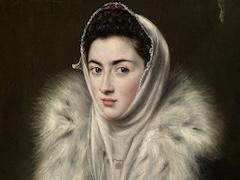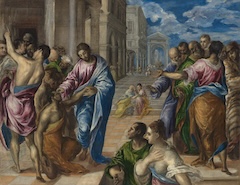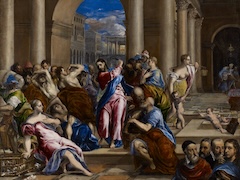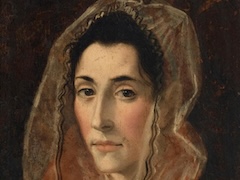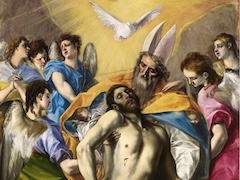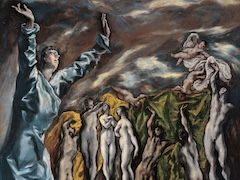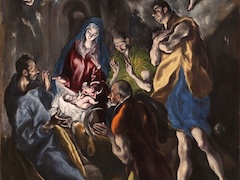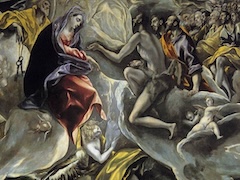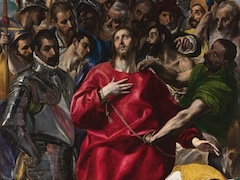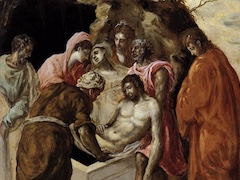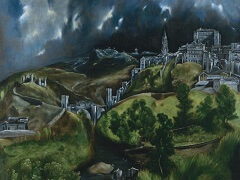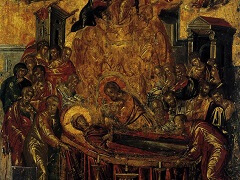Saint Sebastian, 1577-1578 by El Greco
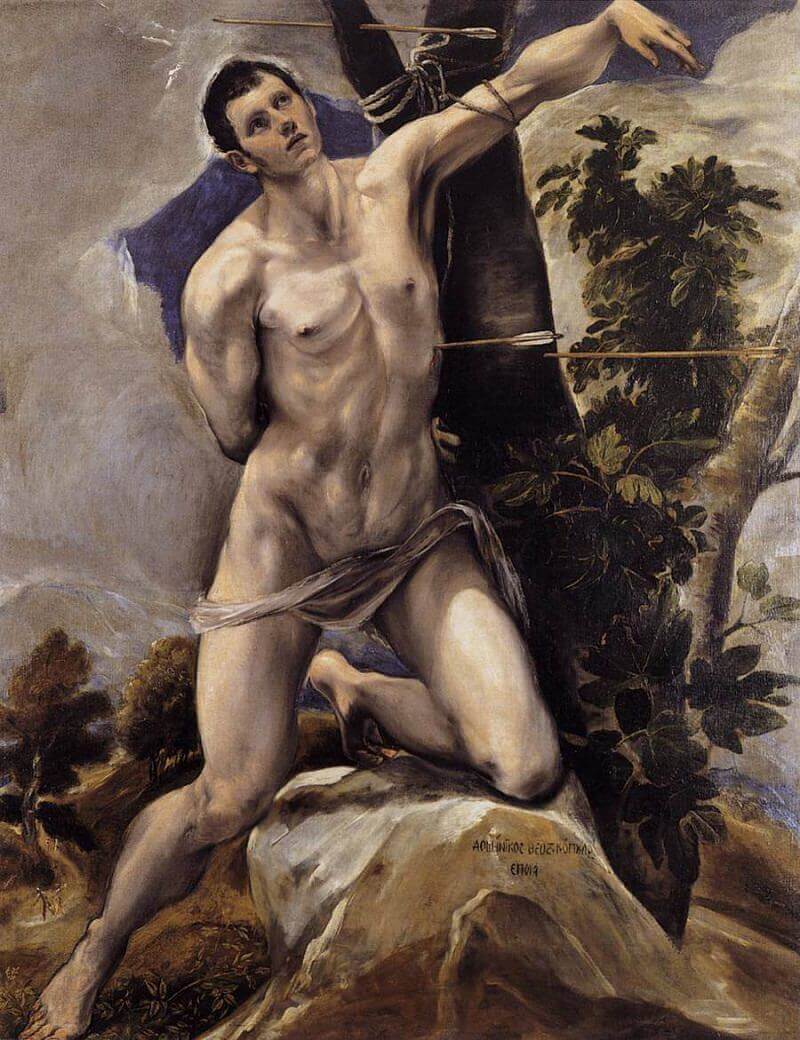
A victim of the persecution of Christians under Diocletian in the early fourth century, Sebastian was twice martyred: first by being tied to a tree or post and shot with arrows and then by being beaten to death and dumped in a Roman sewer. His survival of the first attempted killing - thanks to a group of women who found and nursed him - made Sebastian particularly popular during bouts of the plague. Traditionally, he is shown bound to a tree, standing, and El Greco's decision to show him in a more compressed pose, kneeling, is unusual.
The picture is one of the key works of El Greco's first years in Spain. Wethey suggested that the patron may have been Diego de Castilla, dean of Toledo Cathedral and responsible for the artist's first great commission in the city, the altarpieces in Santo Domingo el Antiguo. Before becoming dean in 1551, Diego de Castilla had been a priest, canon and archdeacon at Palencia. His illegitimate son Luis almost certainly knew El Greco in Rome and may have been instrumental in the artist's move to Spain. On the other hand, San Martin Payo has suggested Bishop Zapata de Cardenas or his protege, Alonso de Cordoba, as the donor of the canvas. In the cathedral inventories the picture is listed in the Chapel of Saint Jerome, belonging to the Reinoso family, and this has suggested the possibility that Francisco de Reinoso, secretary to Pope Pius V, commissioned the picture. The matter of the identification of the patron remains necessarily conjectural and Marias has reminded us that another, though admittedly far less likely, possibility is that this is the Saint Sebastian painted for Bernardino de Mendoza which, around 1582, was placed in the Colegio de Nuestra Senora de Loreto or San Bernardo in Salamanca.
The Saint Sebastian is El Greco's first life-size male nude. Throughout his life El Greco was haunted by the example and fame of Michelangelo - the metre by which every artist in Rome was judged. For an artist of El Greco's talent and ambition this must have proved galling. Mancini recounts that El Greco outraged his fellow artists in Rome by declaring that, were Michelangelo's Last Judgment in the Sistine Chapel to be demolished, he would replace it with something just as good and more decorous.
Even at the end of his life he felt compelled to affirm to the painter-critic Pacheco that Michelangelo did not know how to paint, though he allowed that when it came to drawing the nude, the great Florentine was the model to follow. The Saint Sebastian cannot be detached from this critical position, also involving the relative merits of colore versus disegno and the reputation of Titian (El Greco's model) and Michelangelo.
The pose of the figure has been thought to derive from Michelangelo's Adam in the Last Judgment or his sculpture of Victory in the Palazzo Vecchio, Florence. However, while Michelangelo's achievement provided the impetus for tackling the depiction of a life-size male nude, for the specific pose of Saint Sebastian El Greco turned to the sculpture of Laocoon in the Vatican, as Kitaura recognised. The pose is reversed and the left leg bent back in a kneeling position, but in other respects it is reasonably close. The treatment of the right foot, with the toes pressing hard against the ground, attests to El Greco's close study of the statue itself, and not simply of one of the many prints and bronze reductions that populated artists' studios. This classical statue haunted El Greco almost as much as Michelangelo's legacy. The pose of the figure of Saint Peter in the great Assumption of the Virgin for Santo Domingo el Antiguo derives from one of Laocoon's sons, and the head of one of the angels in the Trinity from the same altarpiece derives from the other. Throughout his career El Greco continued to mine the celebrated sculptural group for formal or expressive ideas. It is quite clear from the Saint Sebastian that, like Titian in his polyptych for the church of Santi Nazaro e Celso in Brescia, El Greco translated the pagan priest into a Christian martyr by reference to a posed model, whose features the artist seems to have retained for the face of the young saint.

